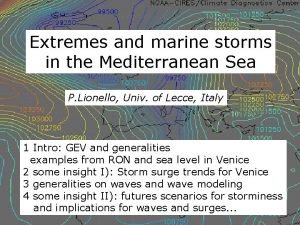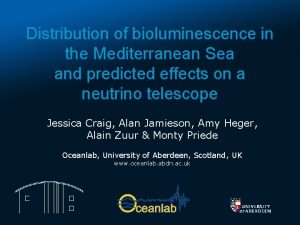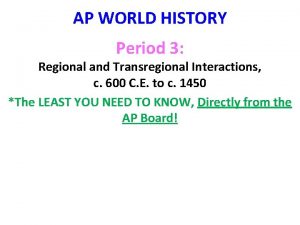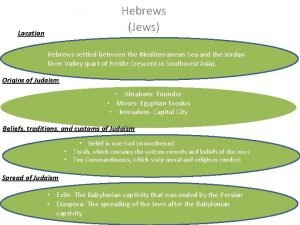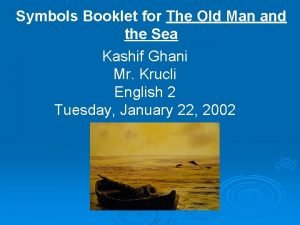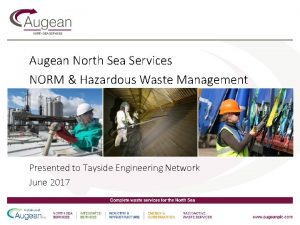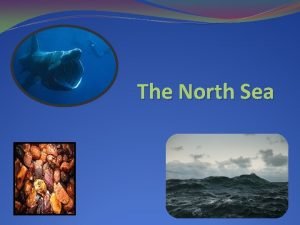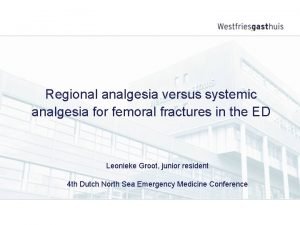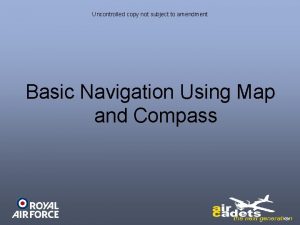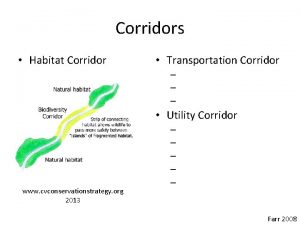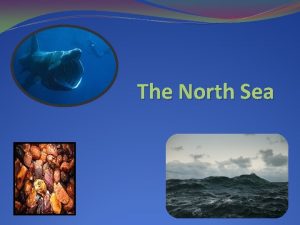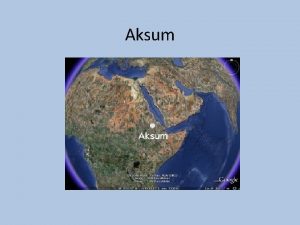North Sea Mediterranean Corridor Presentation of the corridor












- Slides: 12

North Sea. Mediterranean Corridor Presentation of the corridor work plan by the European Coordinator Prof. Péter Balázs Hearing in the European Parliament Brussels, 13 October 2015 Transport

Transport

Key Corridor characteristics ● Six Member States: IE, UK, NL, BE, LU, FR ● Very strong IWW component ● One of the most densely populated areas of Europe ● Major Sea Ports: Rotterdam, Zeebrugge, Antwerpen, Ghent-Terneuzen ● RFC North-Sea – Med as Rail backbone Transport

Critical issues ● Cross-border sections - Inland waterways: o The establishment of Seine-Nord Europe Canal is crucial o Ghent-Terneuzen Lock system is a bottleneck related to the acces to the Seine-Escaut canal project; upgrading and renewal of the lock link between Belgium and The Netherlands is needed. Transport

Critical issues ● Cross-border sections – Rail: o Bottlenecks especially in Paris, Lyon, Strasbourg, Luxembourg and Brussels o Further development of cross-channel through rail ● Intermodality Constraints especially for last mile connections ● Interconnectivity in the North and the West improving accessibility from the island regions; need to further develop Motorways of the Sea ● ERTMS development across the Member States Transport

Corridor priorities ● Investing in cross-border links both for IWW, rail and road with highest European added-value; ● Ensuring the timely implementation of the establishment of the Seine-Scheldt / Seine-Escaut inland waterway canal and its access routes including Ghent-Terneuzen; ● Developing hinterland connections of ports and major works on several sea ports to increase capacity; ● Develop maritime interconnections and maintain efficiency; ● Development of multimodal platforms – especially in inland ports in order to promote modal shift ● Investing in ERTMS, with first priority on corridor "C" route Transport

2014 CEF call for proposals North Sea – Mediterranean Corridor Transport

Recommended CEF funding per corridor € 2, 148. 4 M Rhine - Danube € 1, 917. 3 M Scandinavian - Mediterranean € 1, 753. 2 M North Sea - Baltic 34 M projects € 1, 604. 2 North Sea - Mediterranean € 1, 282. 6 M Mediterranean € 1, 027. 4 M Baltic - Adriatic € 946. 1 M Atlantic Orient/East-Med € 832. 5 M Rhine - Alpine € 610. 5 M 0 500 1 000 MAP Cohesion Transport 1 500 AP 2 000 2 500

North Sea – Mediterranean CEF funding per mode Transport

North Sea – Mediterranean CEF funding per section/mode Transport

Corridor Map with projects Transport

Thank you for your attention Transport
 Storms in the mediterranean sea
Storms in the mediterranean sea Bioluminescence mediterranean sea
Bioluminescence mediterranean sea Mediterranean sea map
Mediterranean sea map Hebrews location
Hebrews location Ionian sea vs aegean sea
Ionian sea vs aegean sea What is asias largest desert
What is asias largest desert Anemones phylum
Anemones phylum What does the sea symbolize in the old man and the sea
What does the sea symbolize in the old man and the sea Sea stack sea arch
Sea stack sea arch Augean north sea services
Augean north sea services North sea animals
North sea animals Dutch north sea emergency medicine conference
Dutch north sea emergency medicine conference True north vs magnetic north
True north vs magnetic north
